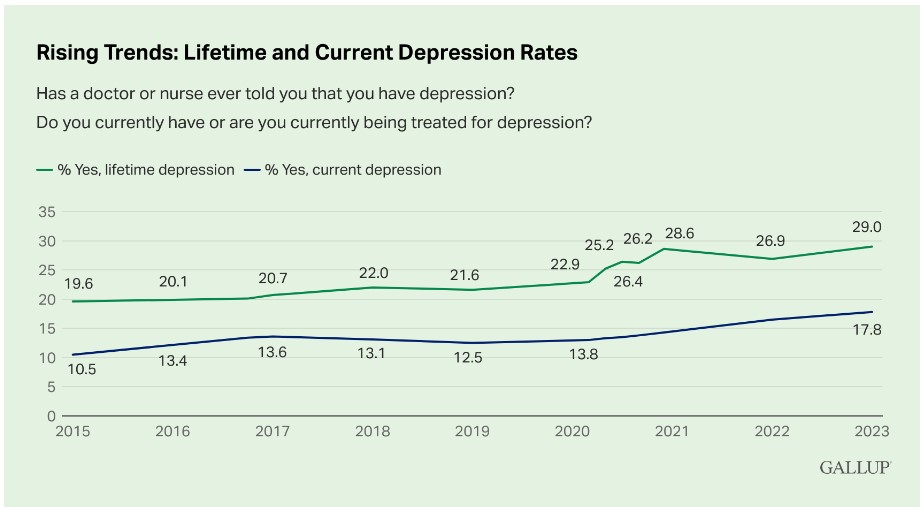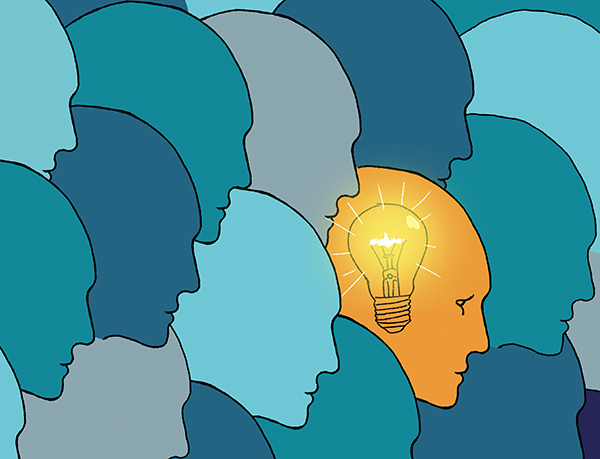Welcome to this week’s Bill Harvey Blog, June 21, 2024
Powerful Mind Part 44 Created January 12, 2024
 Inner Visibility: See Your BioAI, See Your Muse
Inner Visibility: See Your BioAI, See Your Muse
You may say “That’s easier said than done,” wherever in my writings you come across my exhortations to light up your inside, pay more attention to what’s going on inside you, and other phrases of that ilk. I agree. One cannot simply decide to have more inner visibility, one needs specific mental methods to bring that about.
We’ve already discussed some of these methods. Parking the body in a comfortable position where in time it can disappear from your radar. With your eyes closed, watching to see the very beginning of a feeling or thought arising. Being aware of procrastination and going in circles. Daily Alone Space. Mindquiet, thinking without words. Last thoughts before sleep. Conducting your own inner orchestra. And many methods so far in this book Powerful Mind being serialized here.
A visual image – kind of a mind map – is another type of method. Imagine that you are in bed, in an especially comfortable position, nothing about your body feels uncomfortable to you. Your eyes are closed and your breaths are slow and deep. Your mind appears to you in a visual image. In that visual image, you can see that you are composed of an outer bubble, containing two side-by-side inner bubbles, one in front of you on the left, and one in front of you on the right. The essence of who you are, The Experiencer, is what is seeing this, so it itself is not seen in the picture. You look out from your position as The Experiencer.
The bounds of the outer bubble are unknown. The outer bubble when your eyes are open extends as far as your eyes can see, your ears can hear, your nose can smell. The outer bubble is your entire consciousness, and for all you know, may be coexistent with the entire consciousness of the universe, as your present sensory abilities may not tell the whole story.
The bubble ahead of you within the outer bubble on your left is your BioAI, what we have called the robot. It is constantly making suggestions based on calculations, predictions based on all prior stored experiences.
The bubble ahead of you within the outer bubble on the right is your Muse or Master voice, the place from which comes your revelations, inspirations, moments of extreme clarity, mental Flow state, Eureka moments, Aha! moments, the ideas that suddenly pop in and startle you by their insight and their ring of truth.
This image can help remind you to be aware of the provenance of each thought, feeling, and impulse arising within you – is this more imitative babble from the BioAI or is this the Muse.
Alas, at the beginning of such a journey, if you are to be real with yourself – the journey is pointless if you are not going to be real with yourself – you will experience that most of what you allow your most precious asset, your mind, to spend its time on, is babble from the BioAI. The good news is that over time the methods will shift your time allocation substantially over to receiving from the Muse, with a great reduction of time spent and actions taken based on the forecasts of the BioAI.
You may ask, what is the Muse? Is it your own subconscious, or is it actually some helpful invisible being, or is it The One Being that is the entire conscious Universe? Science is not yet able to answer that with high confidence. Someday (my personal conviction) science shall be able to establish what the true answer is. Until then, one must accept not knowing the answer, while still obtaining the pragmatic benefits of receiving suggestions from the Muse and giving them the proper respect and cautious trial in external world interactions.
This image is a tool to be used but is not intended to depict reality itself. In reality, there will be many useful thoughts you think which are not readily classifiable into BioAI or Muse, and in fact, trying to reduce all experiences to two pigeonholes is itself robotic oversimplification – the dodge the BioAI uses to deal with excess complexity – reductionistic oversimplification and dichotomania. What we have called Emergency Oversimplification Procedure (EOP).
Instead, this visualization tool is aimed at noticing evidence of the presence of one or the other of these extreme cases – robotic impulses or flashes of brilliance.
The BioAI, thousands of years ago when the world was far simpler for human beings to deal with, was undoubtedly a very valuable “extra sense” to have. In the complicated civilization rocketing ahead with new changes day to day, the BioAI adapted as best it could, but was outclassed by the challenge slope, as it has moved from climbing a one-degree slope, toward a practically vertical one.
Acceleration of complexity is not the only aspect of our civilization which has strained the BioAI. The type of civilization we have evolved is hierarchical, competitive, and disadvantageous to most Earth homo sapient natives, advantageous to a lucky few. Some of us resonate with the idea of leveling the playing field, and some of us resonate with the game as it has been played for millennia. These philosophical differences have always been manipulated to serve the self-interest of powerful individuals and groups. As a result of complexity acceleration (“Acceleritis”) and these other conditions, the new individual entering this world is likely to experience one or more traumas early in life. These traumas can alter the functioning of the BioAI, predisposing it into an assumed permanent defensive posture which is so ever-present as to become invisible to that person.
We define defensive ego behavior as a predispositional wound syndrome of the BioAI. In many people, the BioAI acts as if that individual is coming from behind, and in one way or another, seeks to catch up. This might involve calling attention to one’s accomplishments or best qualities, taking offense at not being properly credited, chronic envy causing dislike, racing always to get more things done faster, which can cause bodily tensions the individual is so used to they are almost invisible to the conscious mind.
In that latter category, check your body right now, and from time to time throughout each day, to find where you are holding yourself tight and to focus on relaxing those places. Let your shoulders relax down and out, stop causing your breath to be shallow. You are not in a race against the clock (most of the time) so let yourself slow down to enjoy whatever puzzle it is you are in the midst of solving. Put distracting ideas on notes and put them off to the side to thoroughly engage with one thing at a time and enjoy perfecting that one thing. Then organize and schedule the notes for consideration, being very conservative about how much you plan to accomplish in any one day. Leave room for all the surprise requirements that show up on the average day. And for frequent breaks which increase the probability of Flow state (merging with the Muse).
Studying myself through the lens of these mental methods, I find that my original traumatic wound to my BioAI was early heartbreak at my own incompetence at almost everything. My BioAI adjusted to this by doubting myself, even after achieving competency at some things. This insight was obtained through the use of the bubbles imagery outlined above.
The scientistic mood of the present culture is part of the EOP reductionism. Because we don’t “need” God to explain the things we see and measure around us, this permits us to bias our studies toward assumption of materialistic accidentalism. We may not “need” to explain the universe as a single consciousness, but that does not mean that the universe might not in reality be a single consciousness.
It’s best to be open-minded about things that have not been proven yet one way or the other. That includes the possibility that you are a point of view of the universe – “nobly born” as put in the Egyptian Book of Emerging Into the Light, also known as the Egyptian Book of The Dead.
It includes remaining open-minded about what powers of mind you might have – hunches (intuition, precognition) – the ability to receive inspiration – telepathy. Allow yourself to receive. Study the received content and see how it relates to the experiences you are having. Does the content have the ring of truth? When you act upon the received advice, are the results positive or negative? Don’t become hung up on where are the messages coming from – that might not be answerable yet – but that doesn’t mean that one should ignore all such content – better to cautiously test it in your day-to-day life.
Don’t leave out the soul of life – things like wonder and awe, Flow state, spiritual experiences, these peak experiences as Maslow called them have always been tied up with the works of great artists, musicians, thinkers, poets, people who have made life even more wonderful and precious – remain open to those experiences happening to you more often.
Here’s another exercise – try it on for size. Put your preferred hand on your heart and say to yourself:
- Evidence suggests to some philosophers – Vedanta, Kashmir Shaivism, Berkeley, Harvey, and others – a parental field of consciousness within which the Universe is happening
- If this field does not perceive you, you do not exist
- I am a point of view of that Universe consciousness – regarding Itself from many points of view
That may only be a mind-stretching exercise, or it may be the truth. All of the science we have today can fit even more neatly in that framework than it does in the dominant Earth first-world human culture bias framework of materialistic accidentalism.
Key #11:
Inner Visibility: See Your BioAI, See Your Muse
Love to all,
![]()




